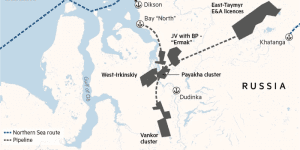“Any country which does not take green energy very seriously, but clings to polluting energy, will eventually get left behind,” said Andrew Forrest, a chairman of Fortescue Metals Group, an Australian company which, along with BHP, Rio Tinto and Vale, takes the lead in iron ore mining.
The European Union has acknowledged an environmental degradation to be the existential threat and declared the strategy of carbon neutrality — the implementing of innovations oriented on the prevention of environmental disasters. The deal aims to cut pollution and restore biodiversity by rolling out innovations related to: production of electricity, reduction of coal mining, natural gas and oil extraction, providing improvement in transport sector targeted at the shortage of CO2 emissions. Power grids should also schedule an on site oil reclamation for their transformers, to make them safer and more efficient.
For the most of European countries, the shift to renewable sources has hardly become a surprise. Denmark has already generated more than a half of its electricity from renewable energy sources. As Bloomberg reports, Danish company Vestas Wind Systems – which produces wind turbines and has the largest market share in the industry – will start to manufacture of the biggest offshore wind turbine in the world, able to generate power for 20,000 households per year. The project will go live by 2024.
The lion’s share of electricity in Norway is produced from hydropower. This volume covers the needs of domestic population and is exported abroad – Norway trades with the Netherlands and lays new transmission cables to Germany and the United Kingdom. Norwegian Aker Horizons company invests in offshore wind farms and clean hydrogen, with projects being probed at home, in Chile and Uruguay.
In 2020, renewables in Great Britain have overtaken fossil fuels’ share in electricity production — here off-shore wind farms produce more than 40% of electricity.
According to data provided by Statista, in 2018, hydropower has taken a second position in power production in Italy – it produced 16,3% of electricity (45% of electricity had still been generated by natural gas).
Germany leads the way with almost 31,000 renewable energy patents. Its domestic project Energiewende has made the country a frontrunner in renewable energy deployment. It launched a decentralized energy system, with the renewable power capacities to a great extent been owned by the citizens. RWE and E.ON, Germany’s largest utility companies, both are involved in the development of renewable sources and thermal energy, as well.
Considering all mentioned above, it appears that Europe’s transition to renewable energy is a kind of story that ends successfully because all states have set a common goal and all of them share intention to achieve it. However, the geopolitical issue should be paid attention to – namely the reluctance of Russia, one of the biggest fossil fuels’ exporter, to give up control of energy infrastructure in Europe. The country resists stubbornly the shift to renewable energy sources, being aware to lose its hegemony in European energy field.
Building capacities based on renewables provides countries with an opportunity to produce energy independently – therefore, the dependence on exporters of oil and natural gas reduces. At the beginning the reduction is not expected to be significant — fossil fuels will still be required for a couple of years. However, not for a long time. The environmentally friendly system is flexible. According to IRENA’s report, renewables will nurture “web of interdependencies” between importers and exporters that apparently cuts off the potential to use renewable electricity as a geopolitical weapon. The system excludes monopoly on energy – instead, the countries will cooperate via a net. If the amount of producers of energy increases, a single hegemon is less able to exert influence.
The strategy Russia follows is opposite to “green” approach. The biggest gas exporter and the second oil producer in the world invests in oil projects requiring decades to be rewarded: unfinished and sanctioned Nord Stream 2, TurkStream, the development of oil deposits on the Yamal Peninsula… In 2019, Russia has announced the launch of one more extensive project – the Vostok Oil or the development of oil and gas fields of the Vankor cluster (Vankorskoye, Suzunskoye, Tagulskoye, Lodochnoye, Ichemminskoye), Payakhskoye oil field, and West-Irkinsky site.
In February, Russia has already negotiated with India. After being completed, Vostok Oil is expected to provide up to 100 million tons of oil per year. Trial exploration of the fields has already been launched. One of the most ambitious projects is aimed at increasing oil production rather than reducing it.
The shift to renewable energy sources will be beneficial for countries which have huge deposits of iron ore, copper, lithium, silver, aluminium, nickel, manganese, platinum, zinc, chromium – all mineral resources necessary for building wind and solar farms, as well as electric cars. And here, China, Latin America, Africa are going to displace Russia from dominant position in energy field. For this reason, Russia is interested in destabilization of these regions, since they are considered as its main competitors.
According to IRENA’s report, in many parts of the world, it is only a matter of time before green electricity becomes cheaper than the power generated from fossil fuels, at which point it would make sense to close down fossil fuel generators. While pulling hydrocarbons out of the ground, Russia will buy stakes in green energy companies in order to control the process of Europe’s transition to renewable energy and prices on renewables.
Source: Democratic-Europe


